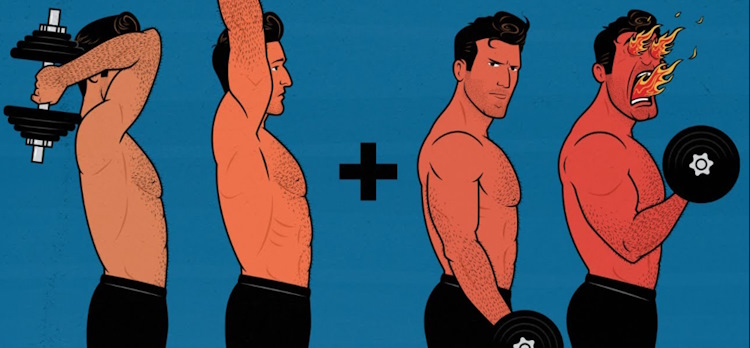Supersets explained: main benefits and how to incorporate them
Bodybuilders and fitness enthusiasts in general are always looking for new ways to intensify their workouts and increase muscle gains. One technique that has been around for a long time and has been gaining popularity for its efficiency and effectiveness is the use of supersets. In this article, we’ll look into supersets, explaining what they are, their benefits, and how you can incorporate them into a bodybuilding routine for better results.
Supersets involve performing two exercises back-to-back with little to no rest in between. There are various types of supersets, each with a different targeting of muscles, including agonist, antagonist, and unrelated muscle groups. The general idea is to keep the intensity high by minimizing rest intervals, leading to increased calorie burn and muscle engagement.
The main benefits we can expect from supersets
Time efficiency
Supersets are a time-saver, allowing you to do more work in a shorter amount of time. This is especially beneficial for those with busy schedules who struggle to fit lengthy workouts into their daily routines.
Intensity
By performing two exercises consecutively, you maintain a higher level of intensity throughout your workout. This elevated intensity can lead to greater muscle fiber recruitment, promoting improved strength and hypertrophy.
Caloric expenditure
The continuous approach of supersets elevates your heart rate, bringing in some of the benefits of cardiovascular training as well. This dual-action approach helps burn more calories for longer, contributing to fat loss and improved overall conditioning.
Pump and vascularity
The continuous flow of blood to the targeted muscles during supersets creates an incredible pump effect. This increased blood flow not only enhances muscle fullness but also contributes to better vascularity.
3 more common types of supersets
Agonist supersets
Pairing exercises that target the same muscle group. For example, combining bicep curls with hammer curls to more rapidly exhaust the biceps;
Antagonist supersets
Two exercises targeting opposing muscle groups. This could include combining bench press with bent-over rows or another back exercise, promoting balanced development and preventing muscle imbalances;
Unrelated supersets
Pairing exercises that target different muscle groups. This type of superset keeps the workout dynamic and challenges your body in different ways. An example would be combining triceps dips with calf raises.

Tips for effectively supersetting part of your workouts
Start with unrelated or antagonist supersets
Pair exercises that don’t interfere too much with each other’s performance at the beginning. For instance, pairing a lower body exercise with an upper body exercise allows one muscle group to recover while the other is engaged. The agonist supersets tend to be harder to do for beginners as they’re too intense especially for smaller muscle groups;
Mind the intensity
Keep the weight challenging but manageable. Since rest periods are minimal, using excessively heavy weights might compromise your form, which can eventually lead to injury;
Listen to your body
Pay attention to how your body responds to supersets. While they can be effective, they may not be suitable for everyone. If you experience excessive fatigue or strain, consider adjusting the volume or intensity;
Progressive overload
As with any workout routine, aim for progressive overload by gradually increasing the resistance or volume to continue challenging your muscles over time.
All in all, supersets can be a powerful tool for bodybuilders, offering a time-efficient and effective way to stimulate muscle growth, improve endurance, and enhance overall fitness all while providing some of the benefits from cardiovascular training. By incorporating supersets into your routine, you can break through plateaus, promote muscle growth and offer new stimuli to your body. The main takeaway is finding the right balance and adapting this technique to suit your individual goals and needs.









